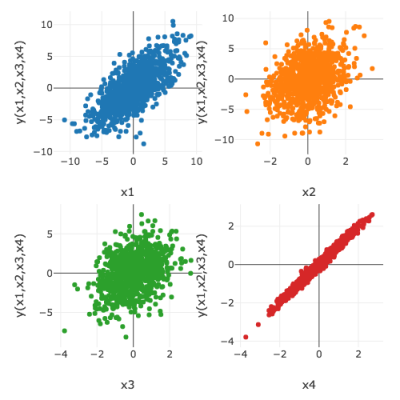Sensitivity Analysis
Sensitivity analysis allows for quantitatively attributing parts of simulation results to changes or variations in individual input parameters. On the basis of the information provided by a sensitivity analysis, it is possible to determine which of the parameters are the most relevant ones and which input parameters might be rather negligible. The knowledge of which subset of the parameters have substantial influence on the simulation results allows for identifying potential problems at an early stage, better and more precisely refining models, and constraining the domain for design and optimization. Out of the variety of available approaches in the literature, AdCo EngineeringGW mainly uses two approaches for sensitivity analyses. On the one hand, we use variance-based approaches on the basis of Sobol indices. With this method, it is possible to separate the variance of the results into parts, which may then be attributed to individual input parameters. To reduce the number of model evaluations that are required for a sensitivity analysis, it is often beneficial to replace the simulation model with an emulator specifically generated for this purpose. If the goal of a preliminary step is to determine which of the input parameters in high-dimensional models contribute significantly to the uncertainty in the results rather than already quantifying the exact sensitivities, a screening method can be a viable alternative. With such an analysis, which merely raises relatively low computational costs, parameters without significant influence can be sorted out before a more detailed analysis is carried out with the remaining parameters. In such cases, AdCo EngineeringGW applies the time-tested elementary effects method.

